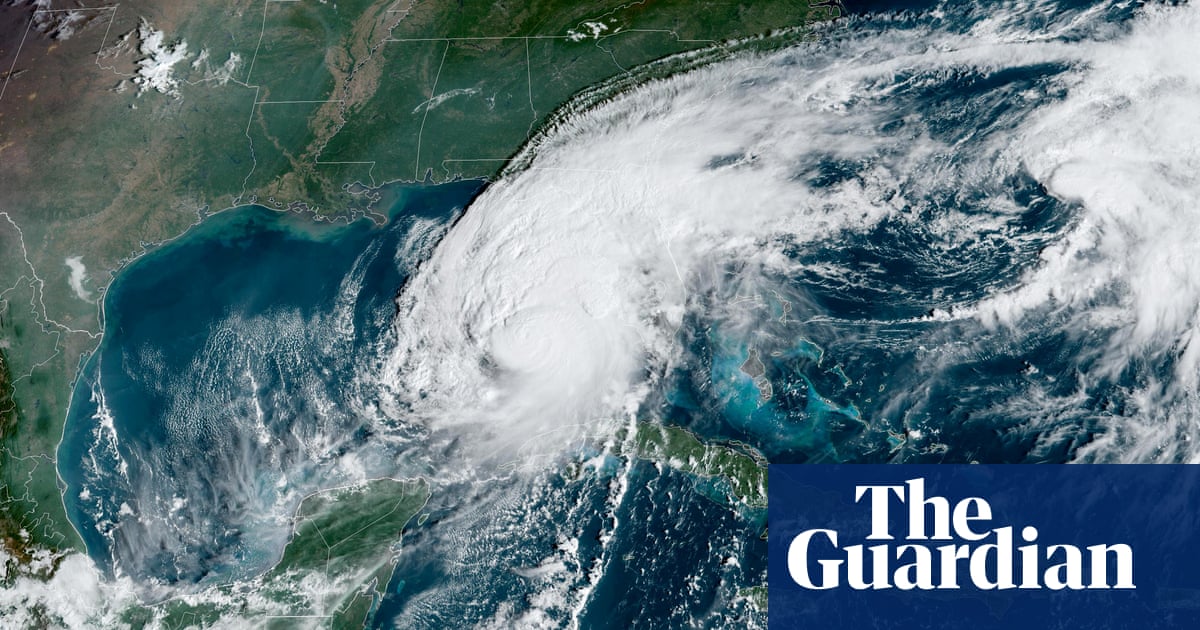When journalist and author Lech Blaine was 11 years old, his mother Lenore would often joke she could write a book about the trouble that lay just beyond their Toowoomba driveway.
At the time, Blaine couldnât imagine anyone wanting to read about Michael and Mary Shelley, and the âvisceral terrorâ these two outsiders inspired in him and his siblings. Mary, with her purple dress and slightly posh accent, appearing on their doorstep calling his mother âSatanâs handmaidenâ, calling his siblings by unfamiliar biblical-sounding names like âSaulâ and âJoshuaâ. Michael, sitting ominously in the White Chrysler outside, already a convicted kidnapper with a long and colourful rap sheet. Blaineâs family would grow familiar with the wild, all-caps letters that would appear in their letterbox, and the police cars that would follow a visit from the two strangers who wrote them.
âIâd been so terrified of them, even when I was still a teenager,â Blaine explains, now 32. âEven after Iâd moved away from Toowoomba I used to dread their potential arrival.â
It could seem there was no escaping the Shelleys. In his latest book Australian Gospel: A Family Saga, Blaine tries to make sense of the deep ties binding the families together.
Blaineâs siblings Steven, John and Hannah had been born Saul, Joshua and Hannah Shelley â the biological children of Mary and Michael. But they were, separately, removed as babies and toddlers from their care by social service workers concerned about their treatment and placed into the care of foster parents â Tom and Lenore Blaine. Mary and Michael would never stop trying to recover their children; by law or by threat of force.
The Shelleys were a pair of self-styled Christian prophets sharing their custom blend of Old Testament brimstone and back-to-the-earth hippie culture with anyone who listened.
For years the pair had hitchhiked their way around Australia and New Zealand, leaving a scorched-earth paper trail across courtrooms, gaols and newspaper columns. They quickly burnt through the goodwill of anyone who helped them, and waged scornful campaigns of harassment against those who didnât.
That placed them on a collision course with the Blaine family; two working-class parents and their chaotic brood of rugby-loving foster kids with matching back yard haircuts, being raised against the backdrop of small-town country pubs. To the Shelleys, they represented everything that was morally and spiritually corrupt about modern Australia.
For years, their childrenâs new identities, foster family and location were a closely guarded secret. Finding them, and recovering them, became the Shelleyâs obsession. They spent decades harassing social workers, sending death threats to the premier of Queensland, and in 1983 kidnapped their eldest son, Elijah, from his foster home.
Despite the restraining orders and stalking charges, the Shelleys would haunt the Blaines for years, with a near-constant stream of threatening and pleading letters sent from wherever Mary and Michael were in the world.
âThe contempt I feel for you two child abusing deviates is profound and deserved,â Michael would write in one email to Lenore, adding, âI rejoice in where you are both going â HELL!â
These tirades formed part of a long and knotty paper trail that Blaine would base his book on.
Blaine began piecing together the story after moving back home at 21. His mother had been diagnosed with a rare and terminal neurodegenerative illness, and as he tried to make sense of her future, he also found himself grappling with the familyâs past.
âSheâd kept this meticulous record of everything and passed all that stuff on to me,â he explains. âSo I spent that summer organising her nursing home placement, selling the house, and going through basically everything that she had.â
There were yearsâ worth of diary entries, newspaper clippings, social service reports and, more recently, a decade of emails that the Shelleys had inundated her inbox with.
âI got so addicted to information at times,â he says.
âAt that point, thanks to a lot of the information that Mum had kept, I realised how much more interesting the Shelleys were than these really quite terrifying, monstrous people in my imagination as a child.â
With his mother too sick to write the story, Blaine resolved to do it himself.
His motherâs archive told one side of the Shelley story. But as he began to reach out to social workers and other witnesses, Blaine knew there was another source he needed to hear from: Michael Shelley.
âI lived in absolute fear of him,â Blaine says. Nevertheless, he sent him an email. âI actually still canât believe that I really did it.â
Michael responded to Blaineâs first tentative email and was soon sharing his own personal archive of over 400,000 words of material including unpublished autobiographical accounts, reports and sermons. Even from someone Blaine knew was an âincredibly unreliable narratorâ, it created a vivid picture.
Blaineâs siblings were burnt-out from years of Michaelâs fiery attempts to reconnect â often by accusing his children of being a âTRAITORâ, âbrainwashedâ by authorities and the Blaines. But Lech Blaineâs correspondence struck a different tone to the harassing messages his family had received for years.
after newsletter promotion
âIt was pretty civil,â Blaine recalls. âOccasionally he would go on some rants, but he never really got vicious with me. I think that he was more angry at my foster siblings because they werenât paying him any attention or trying to get in contact.
âThis is a guy who had spent decades desperately trying to get people to read his writing and to ask him what he thinks about things. I was really one of the only people whoâve ever actually showed much interest in what he had to say.â
Shelleyâs own voluminous writings filled in the gaps in the public record, his motherâs records and Blaineâs own childhood memories.
âI got a much better sense of who they were before theyâd suffered nervous breakdowns, and I got a genuine sense that they werenât evil. They werenât irredeemably awful. From their birth they were rich, complex people who had quite serious, especially in Maryâs case, quite serious mental health issues.â
In a previous life, the Shelleys had been charismatic, privileged Sydney socialites whose relationships and exploits had garnered magazine front pages and newspaper column inches.
The Shelleys found each other in the wake of breakups and breakdowns, beginning a decades-long co-dependency that saw them drop out of mainstream Australia for good, no matter the cost.
As the book took shape, Blaine was also committed to recognising how his own parentsâ complexities shaped their family experience. He could see how his âlarrikinâ Dadâs sense of humour was a âcoping mechanism for some of the things that he suffered when he was quite youngâ. He understood how his mother was an excellent foster carer because she was nonjudgemental, âshe didnât radiate any sense of superiority to childrenâ.
Lenore and Tom Blaine, and Michael and Mary Shelley all passed away years ago and as Lech Blaine worked on the book, his siblings wanted the same treatment in the book as their elders: to be seen as complex, not caricature.
âThey werenât expecting me to paint like a rose-coloured portrait of them,â he says.
Blaine did not want, either, to paint a rose-coloured portrait of hope in modern Australia. Through tracking the lives of his siblings and their siblings, Blaine shows that whether someoneâs life becomes an Australian dream or nightmare can hinge on an opaque mix of nature, nurture, systematic factors beyond most peopleâs control and sheer luck.
The final result, Australian Gospel, is a big-hearted epic, where the pangs of terror are never far from the next belly laugh.
To understand the story from his siblingsâ perspective, Blaine called them every few nights, talking for over an hour at a time. âThat went on for years,â he says. âI think it just created a real intimacy.â
As children, the Shelleys had threatened to tear the Blaine family apart. As adults, piecing together their story helped bring them even closer.



